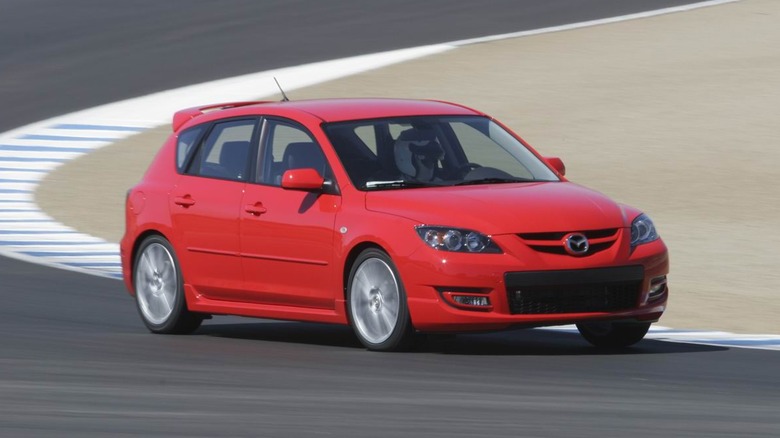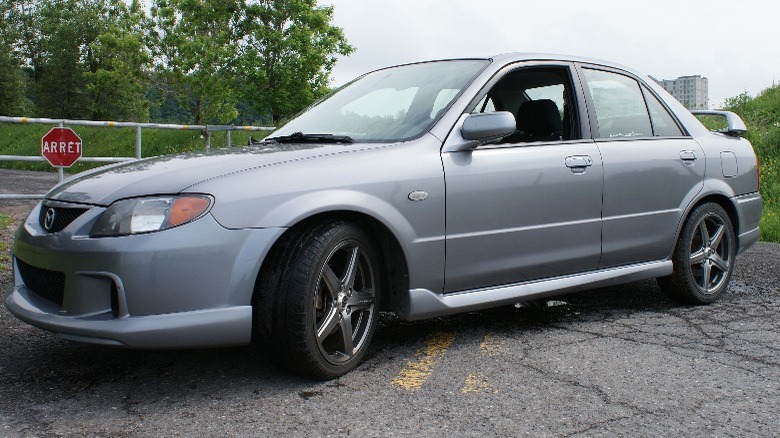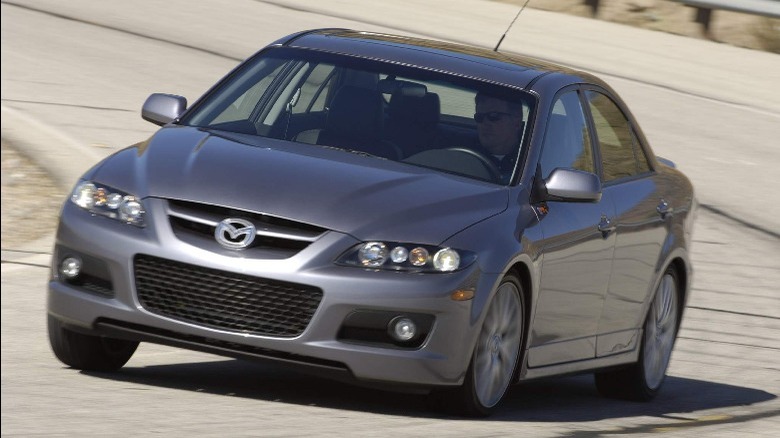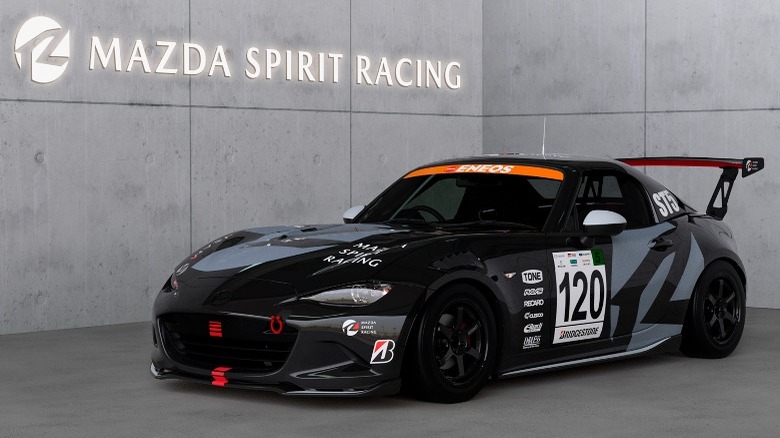What Was Mazdaspeed And Why Did Mazda Discontinue It?
The Mazdaspeed story traces its origin back to the late 1960s, when a racing team run by the Mazda Auto Tokyo dealership caught the attention of Mazda corporate. The team's growing reputation on the track (including the first Japanese car win at the 24 Hours of LeMans in 1974) drew in more support from Mazda, until the manufacturer took on Mazdaspeed as a sub brand in 1983.
Mazda applied its racing knowledge to select production cars, starting with the limited edition Protegé in 2002, giving them the Mazdaspeed badge and tuner delights such as boosted horsepower, better handling, and improved suspension. The manufacturer also sold Mazdaspeed parts and accessories gearheads could use to tune and trick out their vehicles. It helped build the racing team's brand recognition and Mazda brand loyalty by giving fans a piece of the action.
After only building a few Mazdaspeed editions, Mazda stopped producing the sub-brand by 2013. Let's look at which models got the track-inspired makeover, and why you won't find any new ones on the showroom floor.
The Mazdaspeed Protegé and MX-5 were first out of the chute
In late 2002, Mazda unleashed a turbocharged Mazdaspeed Protegé in the U.S. and Canada, making it the first non-race car to carry the badge. The Protegé was a FWD, 4-door sedan Mazda had been manufacturing since 1990, with a 2.0 L in-line 4 that pushed out 130 hp. Going Mazdaspeed added about $3,000 to the starting MSRP, as well as an inter-cooled Garrett T25 turbocharger that brought 40 more hp to the party. This Protegé got beefed-up drive shafts, four-wheel disc brakes, clutch disc, and pressure plate to handle more vigorous cornering and engine. And it all rode atop bigger, badder ultra low-profile tires.
Then it was the Miata's turn. The tuned two-seater cost about $3,600 more than the base model — starting at $25,730. It added a gear and an intercooled turbo to become a 5-speed, corralling 178 horses (36 more than the base model). The Mazdaspeed came with standard rear LSD and upsized front and rear sway bars, radiator, clutch, and 17-inch tires. A new strut tower brace added stiffening for better handling. Only about 5,400 of the beasts were produced before their factory was destroyed by a fire.
[Featured image by Arts911 via Wikimedia Commons | Cropped and scaled | Public domain]
The MazdaSpeed6 and 3 followed
The Mazdaspeed's success encouraged the automaker to modify the Mazda6 4-door, FWD sedan in 2006. Although the original 6 was available as a sport wagon, hatchback, or sedan, Mazda selected the sedan for the Mazdaspeed treatment, turbocharging its 2.3-liter, four-cylinder engine from 160 horsepower to 274. The standard five-speed manual transmission was upgraded to 6 speeds with AWD.
The Mazdaspeed6 from 2006 and 2007 was planted on stiffer suspension and larger wheels and tires. The racier sedan also got bigger brakes, a more ridged chassis, and standard stability control.
In 2007, the Mazda3 hatchback was overhauled, knocking its horsepower up from 156 hp to an incredible 263-horsepower. The burst came from a turbocharged 2.3-liter direct-injection spark ignition power plant based on Mazda's MZR engine. Unlike the other Mazdaspeed models, the 3 was produced for two generations between 2007 and 2013. It became one of the fastest production cars Mazda ever made.
No other Mazdaspeed edition was released after 2013, leaving fans wondering what happened. Motor Trend reported in 2016 that the president of Mazda North America said, "As a brand, we are trying to elevate again a little bit more because execution of [...] Mazdaspeed3 or whatever you call it was a little bit — I am not afraid to say it — childish." That sounded like the last nail in the coffin for the sub-brand as Mazda moved up in luxury and away from racing.
The rise of Mazda Spirit Racing
Mazda has continued to produce the MX-5, but the "Zoom Zoom" philosophy didn't drive its other vehicles. That is, until 2021, when the Mazda3 Turbo blazed in showrooms with outsized performance that caused reviewers and fans to excitedly invoke the Mazdaspeed name.
The real spiritual successor, however, may be the new badge previewed at January 2024's Tokyo Auto Salon: Mazda Spirit Racing. Two concepts from the performance sub-brand were unveiled. The Spirit Racing 3 looks like a souped up Mazda3, and the Spirit Racing RS looks like a soft-top 2024 Miata RF in gray. There's no word yet on specs, pricing, or availability from the automaker. The only mention of Mazda Spirit Racing from the manufacturer website refers to its racing team, including imagery. However, it's clear the company is keen to bring the track back to the market. According to Hagerty, Mazda's president announced, "For the first time in 25 years since Mazdaspeed we have established a factory motorsports division — Mazda Spirit Racing".



